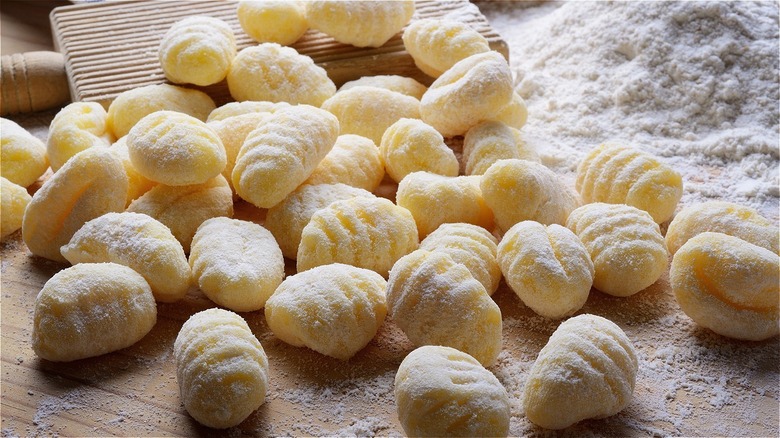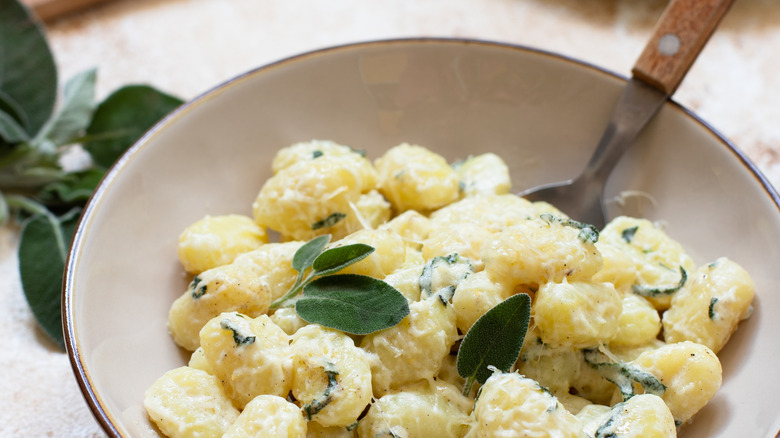You Should Use Your Hands When Mixing Gnocchi. Here's Why
Ordering gnocchi in Italy and pronouncing it incorrectly will give you away as a tourist faster than your fanny pack and camera dangling from your neck. Along with a handful of other foods that are commonly mispronounced, the g in gnocchi is silent, like in the word 'gnome,' per Cookist.
Gnocchi, a specialty of Northern Italy, are small dumplings made from various ingredients, notably flour and potato or ricotta. Recipes for gnocchi have been traced back to the 15th century, but the version created in the 17th century closely resembles the potato gnocchi known today. Pellegrino Artusi, considered the "grandfather" of Italian cuisine, called the delicate dumplings a "predecessor to pasta," via Saveur.
The art of making gnocchi, like different pasta shapes, has been passed down from mother to daughter as part of their "Italian cultural heritage," according to La Cucina Italiana. With regional variations in the dough and accompanying sauce, potato gnocchi is the most popular version but not the easiest to prepare. Potato gnocchi requires boiling, peeling, and ricing hot potatoes before mixing in flour. Hence, experts recommend starting with ricotta gnocchi, which cuts out a lot of prep work and dirty dishes.
Just like the first pancake or crêpe, each batch of gnocchi will improve as you figure out the flour-to-ricotta ratio. To help, we're sharing tips to make your first batch of gnocchi light and fluffy, qualities that will surely impress harsh critics like nonna.
Fluffy ricotta gnocchi
According to Real Simple, ricotta gnocchi can be prepared in just 23 minutes. Although many of the most popular recipes online call for an egg in the dough, Real Simple recommends skipping the egg. An egg is added to bind the ingredients; however, Real Simple argues the ricotta will hold the gnocchi together. Adding egg to the recipe will result in more flour, and too much flour and over-handling are mistakes everyone makes when making gnocchi.
Gnocchi dough should be a little wet and 'tacky' and takes some getting used to. Your hands are the best tools to gauge the proper consistency of the dough. Too much flour will make them dense, so resist the urge to add more. Gnocchi requires just enough flour to hold the dumplings together. The Providence Journal refers to the finished dough as "soft and smooth as the freshly talcumed rump of a newborn baby" and suggests tearing off a fingertip-sized piece of dough and forming a gnocco (single gnocchi). Drop the gnocco in barely boiling water to check if it holds its shape. If the gnocco breaks apart, add more flour.
Roll the dough into ½-inch thick ropes and cut the gnocchi into ½-inch pieces. Although not necessary, gnocchi can be rolled on the tines of a fork or cheese grater to give texture, allowing the delicious sauce to fill its nooks and crannies. Muscle memory will make each subsequent batches lighter, which is a delicious reason to practice.

